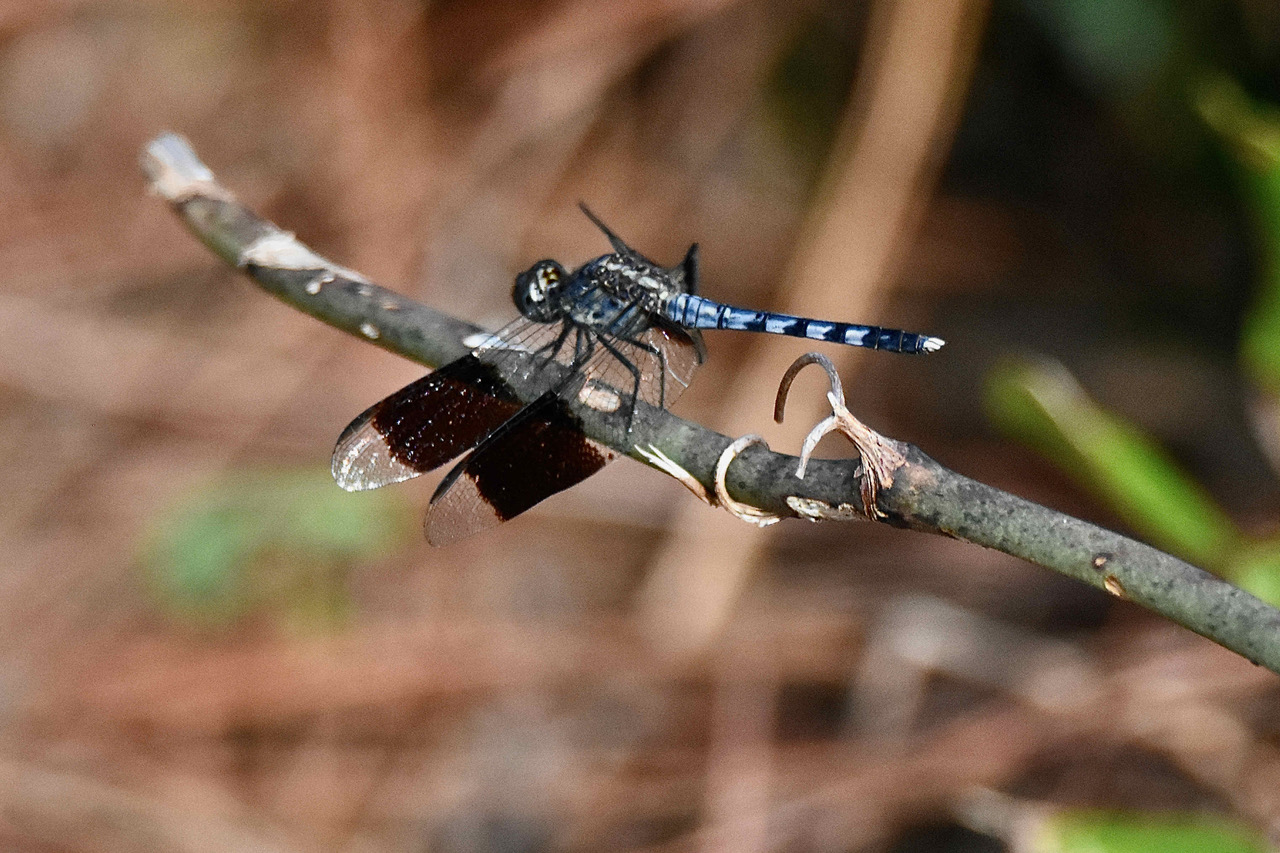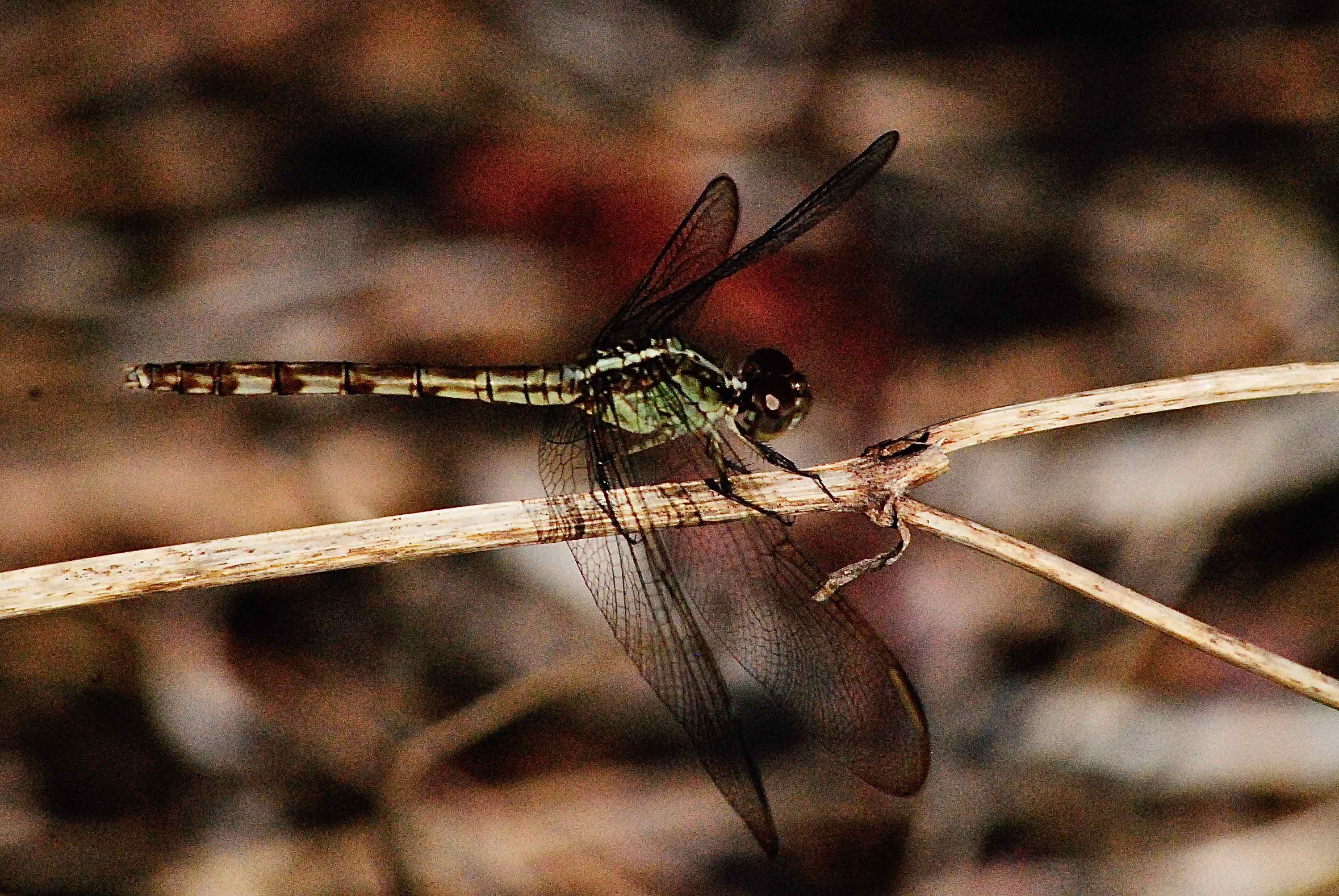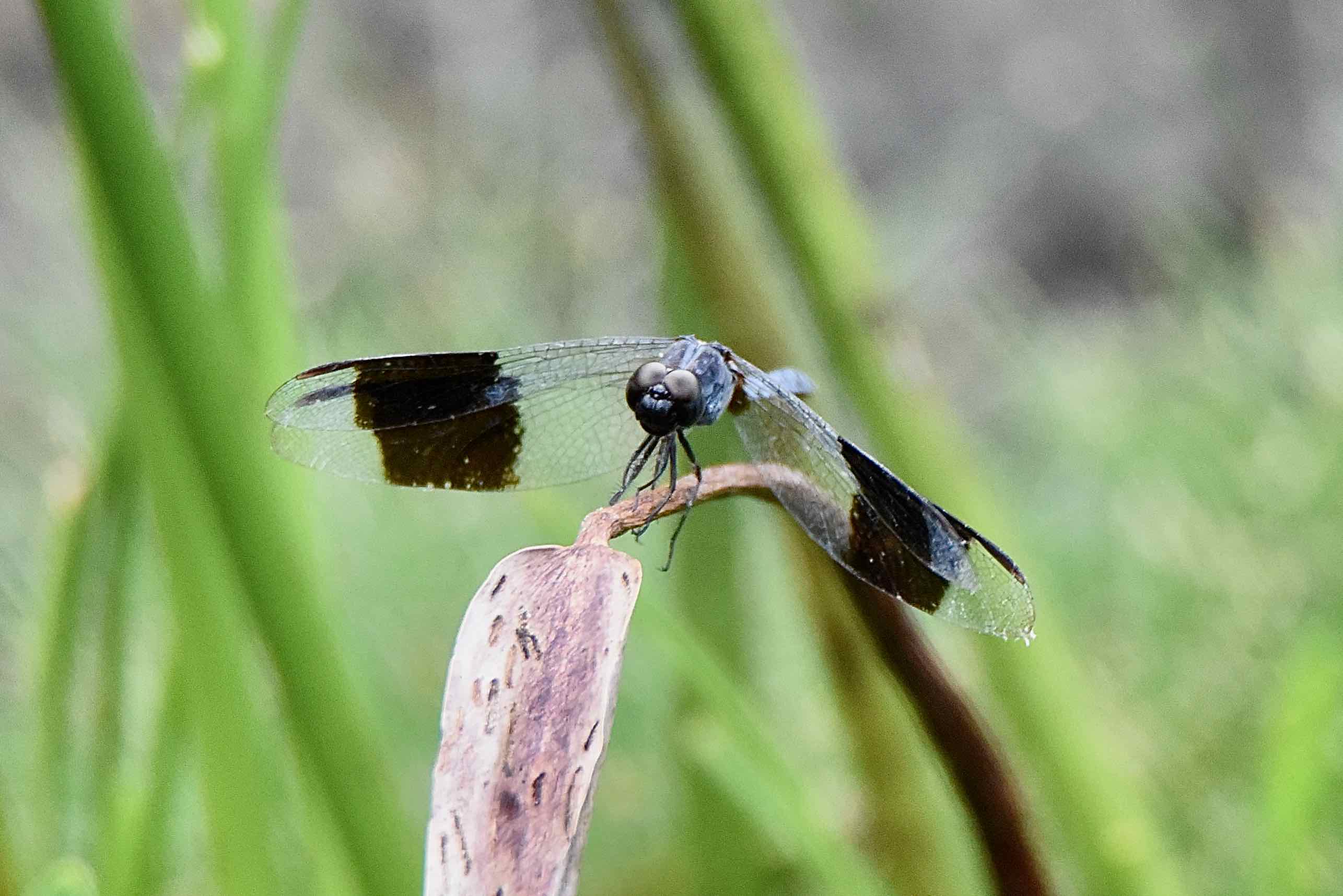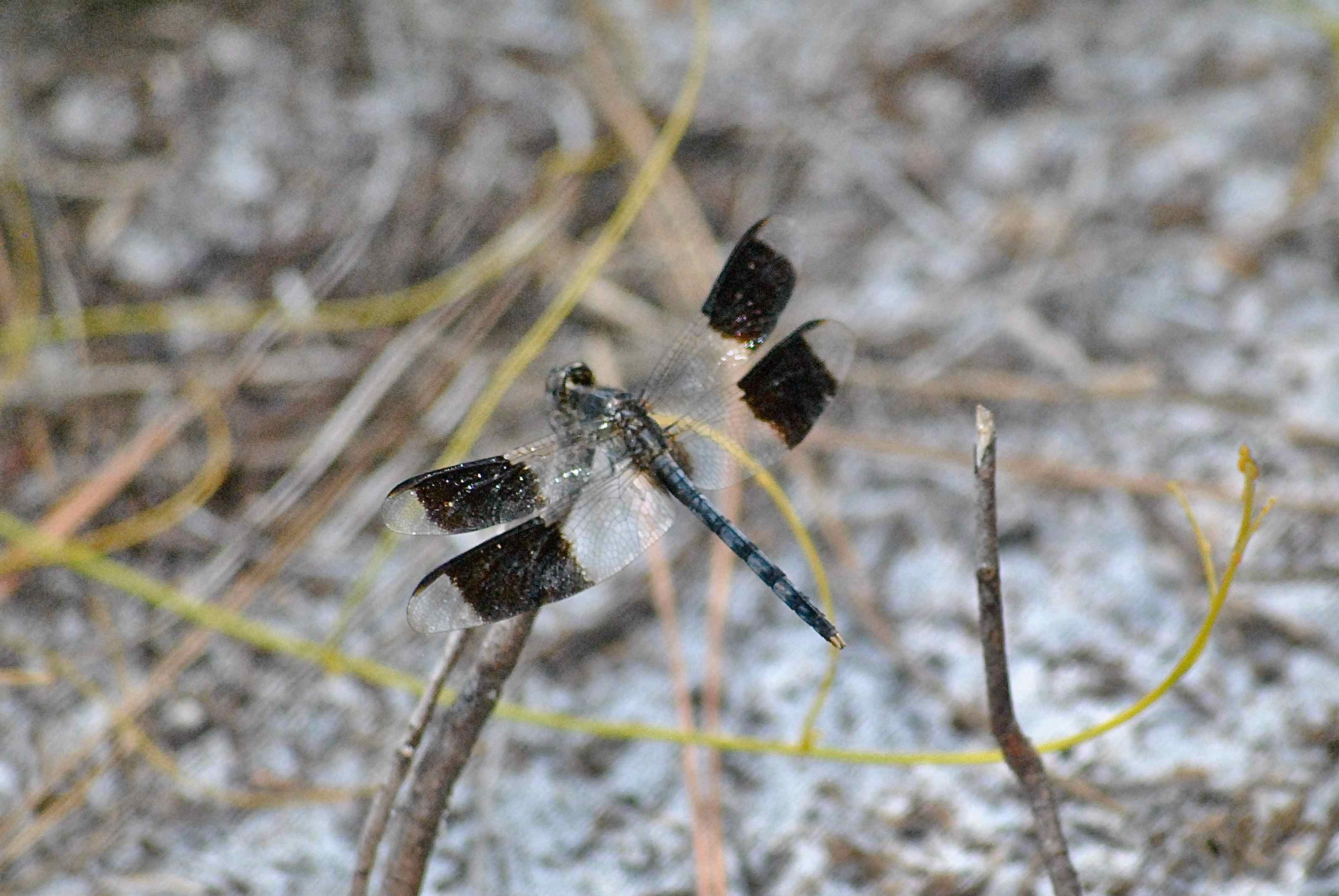
Band-winged dragonlet, photographed at Delaware Scrub Natural Area, Jupiter, Palm Beach County, in September 2018.
So what exactly is a dragonlet? It’s one of nearly 60 types of dragonflies, mostly on the smaller side as dragonflies go, all members of the genus, Erythrodiplax.
Our guy, the band-winged dragonlet, E umbrata, is one of the larger members of the genus, in fact the second largest.
It’s a dragonfly of warmer places, its natural range extending as far north as Florida and south Texas, but it commonly wanders as far north as Oklahoma and Arkansas. It’s also found in Mexico, Central America, the Caribbean and South America to Argentina.
In recent decades, band-winged dragonlets been found as far north as Wisconsin (2012), Michigan (2007) and Ohio. Whether that’s coincidence, the result of climate change or more people looking to see what’s out there, we don’t know.
Males are fairly easy to identify, sporting large, black bands on all four wings, extending from the mid point of the wing to the stigma, that small line on leading edge of each wing near the tip. Males have a slender body; both the thorax and abdomen are blue. (Stignas, or pterostigmas, are groups of cells that are heavier than other cell wings and help dragonflies glide and usually colored differently than other parts of the wing. In our guy, they extend out from the band toward the tip.)
Most females, but not all, lack the wing bands. Their bodies are a drab brown (see photo bottom left).
Note: The four-spotted pennant dragonfly is similar in looks, but two traits separate the species. The four-spotted has a large black spot on each of its wings, but they're noticeably smaller than those on the band-winged dragonlet — they don't cover the width of the wing, nor do they touch the stigma. In fact, the stigma on the four-spotted is white, while the stigma on the band-winged is black.
As we said, dragonlets tend to be on the smaller side for dragonflies. Band-winged dragonlets are more medium-sized, going between 1.45 inches and 1.9 inches long.
Band-winged dragonlets are common here in Florida, and they’re in-flight, or active, year round here. Favorite habitats include temporary pools and water and the edges of marshes. Like all dragonflies, they spend the first part of their lives in water.
According to the Integrated Taxonomic Information System, there are 58 members of the genus Erythrodiplax, most of which don’t have common names. Of those 58, only six include North America as part of their natural range.
Band-winged dragonlets are members of Libellulidae, the dragonfly family.



